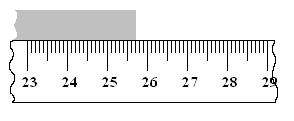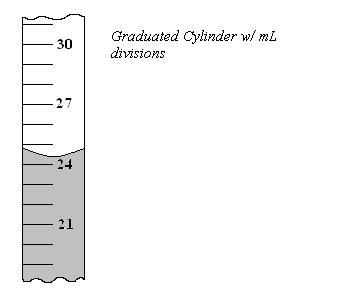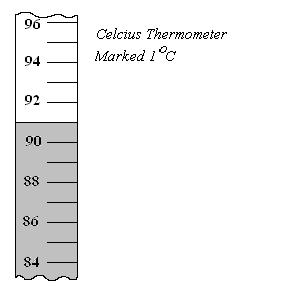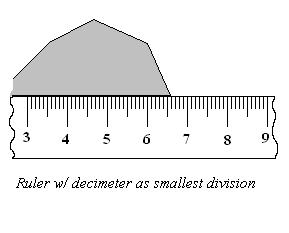Making Accurate and Precise Measurements
For starters let's define accuracy and precision. Accuracy is being
close to the actual or accepted value with your measurements and results.
Being accurate is basically being "correct". Precision is the exactness
of your measurements and results. The term exactness relates to the size
of the divisions of measurement. One-thousandth of a meter is more precise
than one-tenth of a meter. Your measurements will indicate the precision
of the measuring devices you have used. Although accuracy are different concepts,
they are related: the more exact you are able to measure, the more accurate
your measurement should be.
Now on to the actual measuring devices. Most measuring devices are basically
read the same: there is some sort of scale often with multiple divisions
of a particular physical quantity as well as the basic units of the device.
So in making any measurement you will simply read the measurement indicated
on the scale.
We will use a metric ruler as our sample device. Once you can measure
with the ruler you can apply the same process to any measuring device.
Below is a look at part of the metric ruler:

The numbered divisions on the ruler indicate a centimeter (cm) of distance,
while the smaller divisions indicate a millimeter (mm) (1/10 of a cm). When
measuring distances try to align the ruler with the dimension in question.
In the image below a ruler is aligned with the edge of a rectangular
object.
Look closely at the images and you will clearly see that the edge of
the object ends near the fourth mm marking past the 31st cm marking. At
first you would record the length as 31.4 cm, this part of the measurement
is composed of what are known as certain digits. They are certain because
they are actually marked off on the ruler. In order for our measurement
to be scientifically valid we must make an estimate as to how close the
final measurement is to the smallest division (mm in this example). This
last digit is known as the uncertain digit and can be 0, 1, 2, 3, 4, 5,
6, 7, 8, or 9. So, look again at the close-up image and estimate about
where, in between the fourth and fifth mm marking, the object's length
appears to be. Your final measurement should then be recorded as 31.4?
cm, where you have put a digit in place of the question mark ( I would put
a 6). Now your measurement properly indicates the precision of the ruler
you used. The last digit is the uncertain digit and the first digit to the
left of the uncertain digit is the smallest division marked on the ruler.
A tenth of a centimeter is a millimeter in this case. If you were actually
making this measurement you would want to re-measure to see if you get about
the same measurement. DO NOT JUST LOOK AT IT AGAIN! Remove the ruler and
re-align it with the object and make your measurement. if your two measurement
agree with one another, they do not have to be exact just reasonably close,
then your measurement is likely to be accurate.
Look at the next image and record your measurement:

Here is an example you need to be careful with when making scientific
measurements. The object falls exactly on the seventh mm mark past the 25th.
The tendency is to simply write 25.7 cm, but remember you need to end the
measurement with an uncertain digit. Since it is exactly on one of the device's
smallest marking you would use a zero as your uncertain digit. So, you should
write 25.70 cm.
For more details on how the digits in your measurements matter, go to
the Significant Digits discussion.
Below are some more sample measurements using various devices. The details
on how to use each device will come later during labs, for now just read
off and properly record the measurements.
A.

B.

C.

Many measuring devices now have digital displays. With these devices
you simply write down what you see on the display screen. The final
digit on a digital display is usually the uncertain digit.
Two final reminders:
1) Always re-measure when possible, preferably have a partner do the
re-measure..
2) Do not forget to record the uncertain digit, even if it is zero. but...DO
NOT just put a zero at the end of every measurement you make.